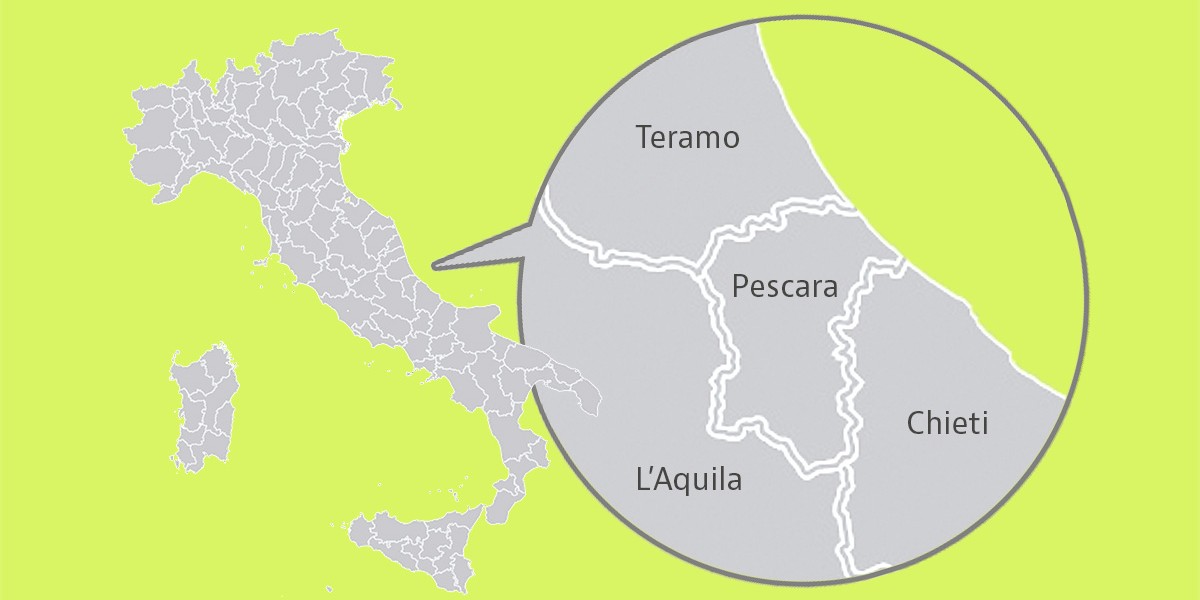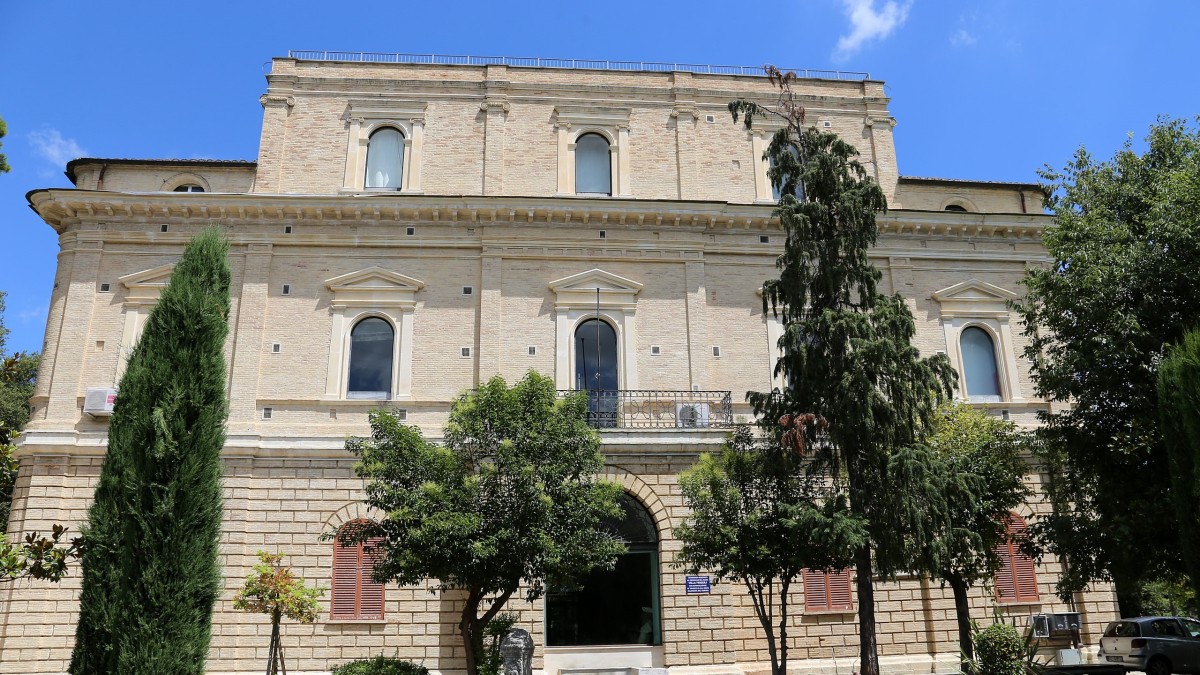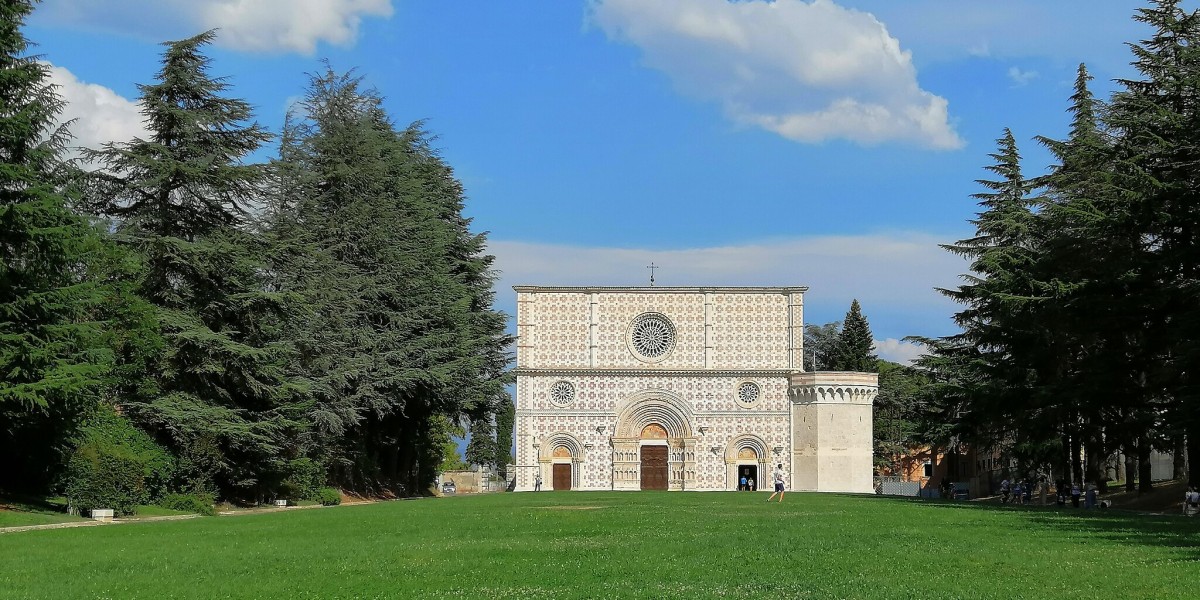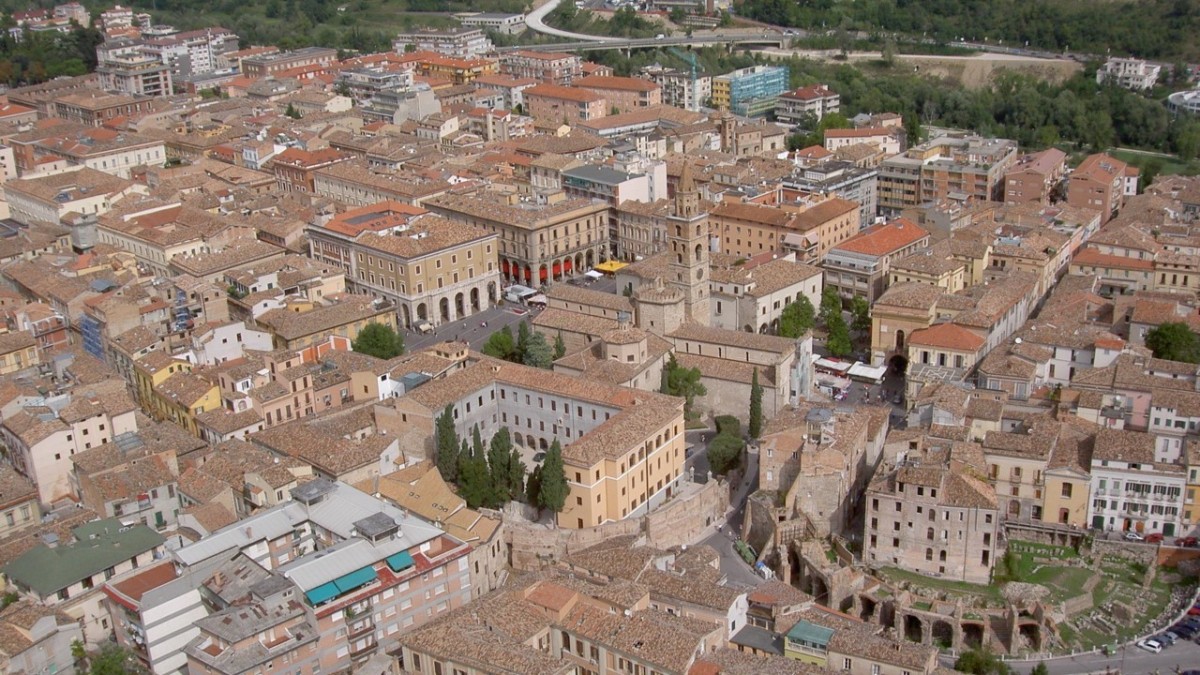
Abruzzo is a region in central-southern Italy, known for its diverse geography that ranges from the mountains of the Apennines to the coastlines of the Adriatic Sea. With a history that dates back to ancient times, it stands out for its ability to preserve centuries-old traditions. The provinces of Abruzzo – Chieti, Pescara, L'Aquila, and Teramo – are marked by an intriguing blend of history, culture, and natural attractions.
The provinces of Abruzzo, Italy
Abruzzo is a region that stretches between the Apennines and the Adriatic coast, with a varied landscape that ranges from the mountains of Gran Sasso and Maiella to gentle hills and sandy beaches. The borders of Abruzzo are defined to the north by the Marche, to the south by Lazio, to the east by the Adriatic Sea, and to the west by the Umbria region and Lazio.
The region is administratively divided into four main areas: the Aquilano, Teramano, Pescarese, and Chietino, each with its own unique geographical and cultural characteristics. But how many provinces are there in Abruzzo? Just like the areas, there are four provinces: L'Aquila (the regional capital), Teramo, Pescara, and Chieti.
The Province of Chieti (CH)
The province of Chieti is the most populous in Abruzzo, renowned for its historical and cultural heritage. Chieti is a city with ancient Roman origins: among the things to see in Chieti are archaeological sites and museums that tell its long history. The province has 104 municipalities and a total population of around 371,000 inhabitants (Istat data).
Among the main attractions, the National Archaeological Museum of Abruzzo houses Roman and pre-Roman artefacts, while the Cathedral of San Giustino is a magnificent example of religious architecture. Nature lovers can explore the Majella National Park, a protected area offering hiking trails amidst breathtaking landscapes.

The Province of L'Aquila (AQ)
L'Aquila is famous for its medieval and Renaissance architecture and is the regional capital of Abruzzo. After the devastating earthquake of 2009, the city managed to rise again, striving to preserve its historical and cultural charm. The province includes 108 municipalities and has a population of around 286,000 people, according to Istat, making it the largest province in Abruzzo in terms of territory.
Among the places to visit, the Basilica of Santa Maria di Collemaggio is a masterpiece of Abruzzese Gothic, while the Spanish Fort offers a panoramic view of the city. For nature lovers, the Gran Sasso and Monti della Laga National Park offers spectacular landscapes and rich biodiversity.

The Province of Pescara (PE)
Known for its beaches and vibrant commercial centre, Pescara is a modern and dynamic city. Ideal for those seeking relaxation by the sea and a lively nightlife, the province of Pescara includes 46 municipalities and has a total population of around 312,000 inhabitants (Istat).
Pescara offers a lively seafront with numerous equipped beach clubs and seaside restaurants. Among the things to see in Pescara, the Museum of the People of Abruzzo tells the story and traditions of the area, while the Ponte del Mare is a modern attraction offering spectacular views of the coastline. The city also features the D'Annunzio House Museum and the Pineta Dannunziana Nature Reserve, dedicated to the poet who was born here.

The Province of Teramo (TE)
Located at the foot of the Gran Sasso, the province of Teramo offers natural landscapes and a wealth of history. The province has a total population of around 299,000 inhabitants (Istat), spread across 47 municipalities, including Atri and Campli.
The historic centre of the city is home to the Cathedral of Santa Maria Assunta, one of the must-see sights in Teramo, while the Roman Theatre stands as a testament to the city's ancient splendour. Wine enthusiasts can visit the local wineries, which showcase the production of the famous red wine Montepulciano d'Abruzzo.

What are the main cities of Abruzzo?
In addition to the four provincial capitals, Abruzzo is home to several cities of significance due to their historical, economic, or tourist importance. Here are some of the main and most notable:
- Avezzano: The economic centre of Marsica, important for agriculture and industry.
- Sulmona: An artistic city famous for its confetti and its historic centre rich in monuments.
- Lanciano: Known for the Eucharistic Miracle and its ski resort.
- Vasto: A beautiful town on the coast, with a charming historic centre and renowned beaches.
- Giulianova: An important tourist destination on the Teramo coast, with a harbour and a lovely seafront.
- Ortona: A maritime city with a strong food and wine tradition, known for its role in the Second World War.

What is the largest city in Abruzzo, Italy?
Pescara is the largest city in Abruzzo, Italy, located along the Adriatic coast. With a population of around 120,000, it serves as the capital of the province of Pescara and is known for its beautiful beaches, making it a popular summer destination. The city combines modern amenities with historical charm, featuring bustling shopping areas and a lively cultural scene.
As the birthplace of poet Gabriele D'Annunzio, Pescara has a rich cultural heritage. It boasts several museums, galleries, and landmarks, including memorials dedicated to D'Annunzio. The city is well-connected by rail and air, with Abruzzo Airport facilitating easy access for visitors.
What are the 3 Abruzzi?
The term "Tre Abruzzi" refers to the historical division of the Abruzzo region into three distinct areas: Abruzzo Citeriore, Abruzzo Ulteriore I, and Abruzzo Ulteriore II. These divisions date back to the period of the Kingdom of the Two Sicilies when the territory was divided into provinces.
With the Unification of Italy, these divisions were maintained until the end of the 19th century, when the region was unified and simply called "Abruzzo." As for the origin of the name "Abruzzo," the most widely accepted theory is that it derives from the term "Aprutium," which in Latin referred to the area inhabited by the Apuli (an ancient Italic people).